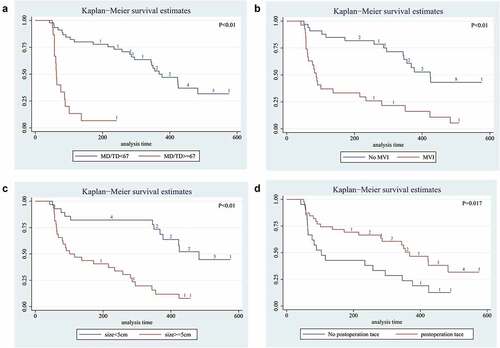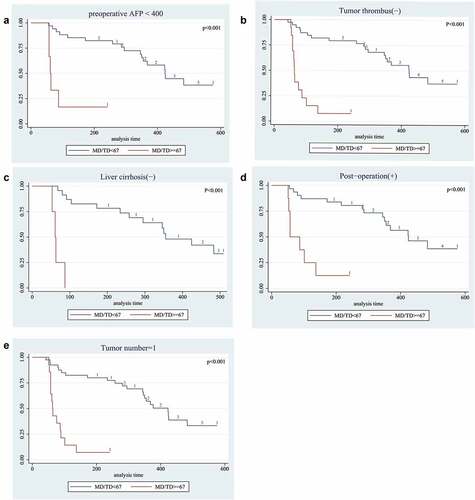Figures & data
Table 1. Clinical characteristics of patients in this study.
Table 2. Results of correlation multivariate regression analysis between patient characteristics and MVI.
Figure 1. Long-term survival outcomes in HCC using Kaplan-Meier’s analysis:A. Survival time of mutation frequency in HCC. The results shown that the patients with MD/TD≥67 had shorter median survival time; B. MVI positive shown worse survival time; C. Tumor size >5 cm had worse result shorter survival time; D. Patient had not been postoperative tace had worse median survival than patients without satellite nodules. P value was assessed using the log-rank test.

Figure 2. Long-term survival outcomes in HCC with mutation frequency using Kaplan-Meier’s analysis:A. Survival curve of mutation frequency in patients with AFP<400. The results shown that the patients with MD/TD≥67 had worse survival time; B. Survival curve of mutation frequency in patients with Tumor thrombus. The results shown that the patients with MD/TD≥67 had worse median survival time; C. Survival curve of mutation frequency in patients without liver cirrhosis. The results shown that patients with MD/TD≥67 had worse median survival time; D. Survival curve of mutation frequency in patients who treated by Post-operation TACE. The results shown that patients with high MD/TD had worse survival time; E. Survival curve of mutation frequency in patients with Single lesion. The results shown that MD/TD≥67 result had worse median survival time. P value was assessed using the log-rank test.

Table 3. Multivariate Cox’s Proportional Hazards Model Assessing Factors Associated with RFS.
Table 4. Multivariate Cox’s Proportional Hazards Model Assessing Mutation frequency Associated with RFS in different Clinical characteristics.
